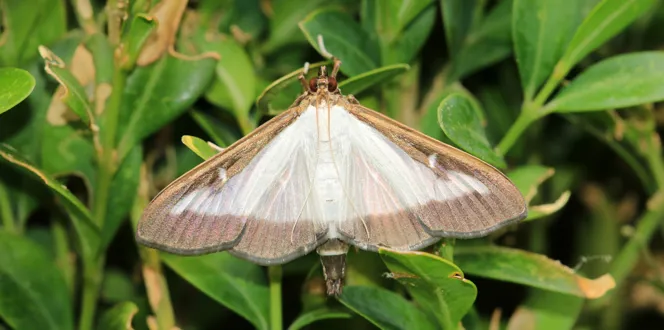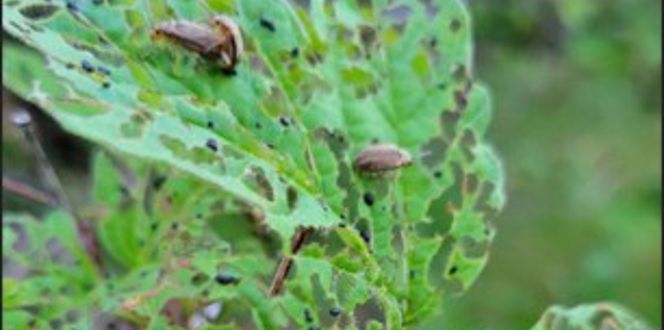As the largest and most widely distributed bark beetle in North America, the red turpentine beetle can be a common pest in your landscape. But you wouldn’t easily know it because it hangs out between the bark and wood of your trees.
If you have pines that have trunks that are telephone pole size or larger, your home landscape may be more of a target for these beetles.
Luckily, despite their wide distribution, outbreaks of this beetle haven’t historically been severe. However, being prepared is always better when it comes to tree pests, so if you see signs of attack, you can stop it quickly and save your tree from extensive damage.
Here, we’ll share the details about red turpentine beetle damage and red turpentine beetle management.
What Does A Red Turpentine Beetle Look Like?
Understanding a tree pest a bit better starts with proper identification.
The red turpentine beetle adult is reddish brown and shaped like a cylinder that is roughly 8 millimeters long. It stands out as one of the only beetles with a distinctive red-brown hue.
Larvae are creamy-white with a brown head, but are difficult to distinguish from other beetle larvae, and will only be found under the bark.
Red Turpentine Beetle Life Cycle
You’ll see the most activity and red turpentine beetle damage in spring and early summer with these pests.
The red turpentine beetle life cycle begins when new beetles emerge from dying trees and attack fresh trees. In summer, their eggs hatch in approximately 1 to 3 weeks, and the larvae begin feeding in groups, sharing feeding tunnels. As they grow, they tunnel away from the adult gallery and feed more extensively on the tree, making fan-shaped galleries as they progress.
Beetles over-winter as larvae and adults and emerge in the spring to start the process over again.
Susceptible Plants
Red turpentine beetles typically attack pines that have been scorched by fire or stressed by drought or construction activity.
Common trees these pests go after include:
- Monterey pine
- Ponderosa pine
What’s more is once the red turpentine beetle attacks a tree, that tree can become more susceptible to other bark beetle attacks.
Damage & Symptoms
Red turpentine beetle attacks usually start near the ground level of your trees and rarely occur above the 8-foot mark.
Attacks are usually identified by the light pink or reddish pitch tubes around the base of the tree that can be up to 2 inches in diameter or the white granular material the beetles leave on the ground. You might even see resin flowing from the wood.
Woodpeckers feed on beetle larvae, so you might see them digging for these pests or notice areas where they have been active in the tree.
Red Turpentine Beetle Control & Management
Red turpentine beetle management is best accomplished with prevention strategies.
The most effective way to prevent these pests from attacking your pines is by maintaining tree vigor with proper care, fertilization, and pruning practices. Avoid hitting your tree with mowers or string trimmers since these beetles are attracted to damaged trees.
Fire-scorched trees or dying trees that are infested should be removed by an ISA Certified Arborist®. Trees that are healthy can be treated with pesticides, but this should always be done by a professional who can properly identify the pest and treat the tree to ensure they target the beetle at the right time and in the right manner for adequate control.





